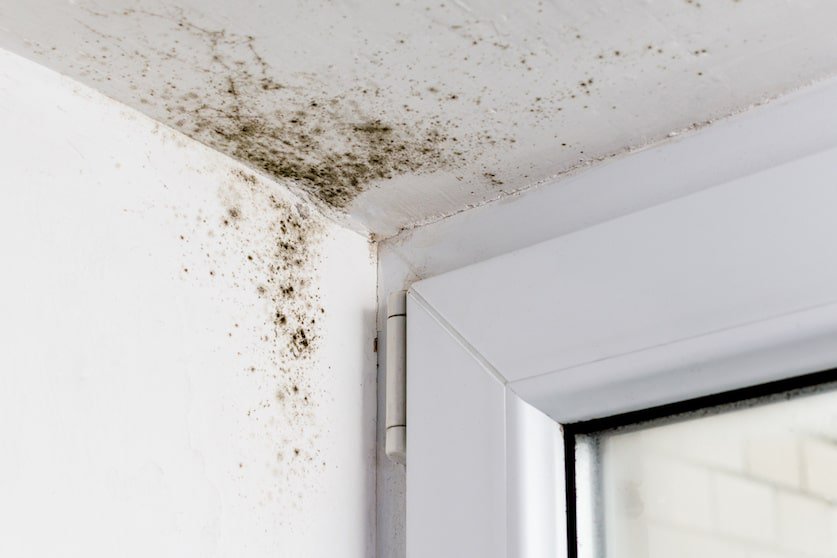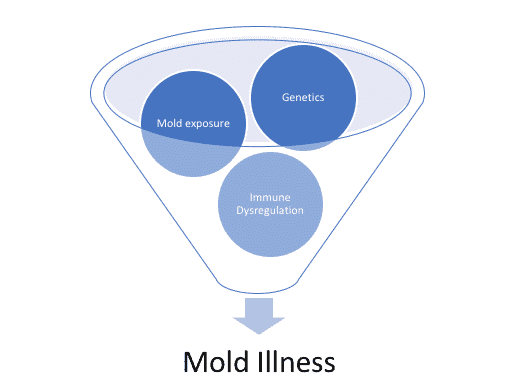Do you live in Tampa, run across mold in your home or workplace on a regular basis, and have a persistent illness that defies treatment — fibromyalgia, chronic fatigue, chronic pain, depression, anxiety, unexplained allergies, difficulty breathing, recurring or lingering sinus infections? Do you feel as though you’ve been drugged or poisoned? If you feel miserable, and your doctor can’t figure out the cause, it could be something in your home or workplace, your food or water, or perhaps even growing inside you — toxic mold.
According to the Centers for Disease Control (CDC), “Molds grow best in warm, damp, and humid conditions.” In Florida, whether we’re inside or outside, chances are good that mold is growing all around us. Chances are also good that mold is growing in us. Sadly, for us, mold and mold infection are nothing new.
However, thanks to Dr. Ritchie Shoemaker, a leading authority on mold-related illness, mold awareness and understanding are growing among people with mold illness, medical providers, and mold remediation specialists. As a result, we are beginning to develop treatments to win the battle against this persistent and sometimes deadly foe. Perhaps more importantly, we now know the underlying cause of numerous catch-all diagnoses that doctors have been giving patients when the doctors can’t identify the cause and are unable to offer any treatment other than partial and temporary symptomatic relief, at best.
Unfortunately, despite Dr. Shoemaker’s diligent and rigorous scientific work, the medical community continues to suffer from a general ignorance of the impact of environmental mold on human health.
Mold Illness: A Dangerous Chain Reaction
Like most illnesses, mold illness begins when someone with a genetic susceptibility to it is exposed to whatever type of mold they’re susceptible to, as shown in the figure below.
In other words, Genetic Susceptibility + Mold Exposure = Mold Illness. The illness begins when repeated and chronic exposure to mold toxins causes dysregulation of the immune system.
An impaired immune system causes an uptick in inflammation throughout the body, often impacting the brain, nerves, joints, and muscles causing a person to feel miserable and tired. (For more on this, read “Detection of Mycotoxins in Patients with Chronic Fatigue Syndrome,” by Brewer, J.H., Thrasher, J.D., Straus, D.C., Madison, R.A., and D. Hooper in the journal Toxins, 2013, 5, 605-617.)
Approximately 20 percent of the population is genetically susceptible to chronic inflammation. When the immune system is chronically aggravated, susceptibility to infections increases. As a result, patients often develop sinus infections, breathing problems, and digestive issues. Chronic inflammation affects hormone production and negatively impacts the endocrine system, causing low androgen levels and altered hormonal signaling
Suspecting Your Home or Workplace
People often wonder whether they need to be concerned about mold in their home or workplace. You should be concerned if any of the following conditions exist:
- Visible mold anywhere in your home. However, mold can be a problem even if you can’t see it.
- Mildew smell anywhere in your home.
- History of water damage in your home, even if it was repaired.
- Current or history of leaks in or around the home.
- Need to use a dehumidifier in your home, and it fills up quickly.
- The AC unit and or vents have not been cleaned regularly, at least every six months.
When to Be Concerned About the Impact of Mold on Your Health
Some people’s health is not impacted by mold exposure. Others whose health is impacted by mold exposure are often unaware of it because their doctors have been unable to diagnose it. Many doctors don’t even suspect mold as the cause of a patient’s symptoms.
You should suspect mold as the cause of your decline in health if any of the following statements is true:
- You’re feeling ill, and your doctor can’t tell you why or provide treatment that provides anything more than temporary symptomatic relief.
- You feel as if you are being drugged or poisoned.
- You have been diagnosed as having an autoimmune condition.
- You are more susceptible to infections. For example, you have a cold, nasal infection, bronchitis, flu, and so on more frequently than you feel is normal for you.
- You experience brain fog and fatigue.
- You have allergy symptoms, but your doctor has been unable to link your symptoms to a specific allergen.
- You have any of the common mold illness symptoms listed below:
| Abdominal pain | Metallic taste |
| Aches | Mood swings |
| Appetite swings | Morning stiffness |
| Blurred vision | Muscle cramps |
| Confusion | Red eyes |
| Cough shortness of breath | Sinus problems |
| Decreased learning of new knowledge | Skin sensitivity |
| Diarrhea | Static shocks numbness |
| Disorientation | Sweats (especially night sweats) |
| Excessive thirst | Tearing |
| Fatigue | Temperature regulation or dysregulation problems |
| Headache | Tingling |
| Ice pick pain | Tremors |
| Increased urination | Unusual pain |
| Joint pain | Vertigo |
| Light sensitivity | Weakness |
| Memory issues focus/concentration issues | Word recollection issues |
Types of Mold We’re Concerned about in Tampa
Before we cover the specific types of mold us Tampans are exposed to, it is important to note that one species of mold can make several different mycotoxins (poisons produced by a fungus). As everyone already knows, mold grows in the presence of water or moisture. What you may not known is this: mold feeds on any organic substrate it can get its hands on — be it food or building material in a home or office — and the mold found in water-damaged homes or buildings can easily spread through the air and enter the body through the air we breathe.
Like plants and animals, mold prevalence varies in different locations and environments around the world. In Tampa, Florida, we are concerned primarily about molds that produce the following four mycotoxins, the first two of which are found predominately in food, and the second two of which are found in water-damaged homes or buildings.
Ochratoxins
According to the American Phytopathological Society, “Ochratoxins are mycotoxins produced by several species of Aspergillus and Penicillium. Ochratoxins may be transferred through milk, blood, and meat. Ochratoxin poisoning is thought to be the cause of a chronic kidney disease in humans known as Balkan endemic nephropathy. Recent studies have provided a link between ochratoxin exposure and human testicular cancer in Europe.”
Cereal grains, grapes, coffee, tree nuts, and figs are common sources of ochratoxin contamination from a number of different strains of fungi, including Penicillium verrucosum and several species of Aspergillus, including A. carbonarius, A. ochraceus, A. niger, and A. melleus.
Aflatoxins
Researchers have identified at least 13 different naturally occurring toxic molds that produce aflatoxins, which can cause liver damage and cancer. The biggest culprits are four strains of Aspergillus, including A. flavus, A. parasiticus, A. nomius, and A. niger. Aflatoxins are found most commonly in corn, peanuts, and cottonseed. Crops commonly become contaminated prior to harvest or after harvest when decaying plants or grains are piled together and start to decompose in the presence of high moisture and temperatures.
Trichothecenes
Trichothecenes are mycotoxins produced by a number of different fungi, including Cephalasporium. According to the CDC, “The likelihood of developing adverse effects following exposure depends on such variables as: toxin type and purity, dose, and duration of exposure.” Symptoms depend on how a person is exposed to the mycotoxin:
- Contact with the skin may cause burning, redness, and blisters.
- Contact with the eyes can result in blurred vision.
- Inhaling the mycotoxin can cause nasal irritation and cough.
- Systemic (whole body) symptoms, which can result from any type of exposure, include weakness, ataxia (lack of muscle coordination), hypotension (low blood pressure), coagulopathy (bleeding), and death.
Gliotoxin
Gliotoxin is a mycotoxin produced by several different fungi, but the fungus of greatest concern is a mold named Aspergillus fumigatus. What happens is that Aspergillus fumigatus produces gliotoxin, which suppresses the immune system, allowing the fungi to thrive. Patients with compromised immune systems, for example from chemotherapy or HIV, are at greater risk of developing aspergillosis — Aspergillus infection. Aspergillosis is most common in people with underlying lung disease, such as chronic obstructive pulmonary disease (COPD) or tuberculosis.
Aspergillus fumigatus is very common in water-damaged buildings (WDBs).
Now that you’re aware of the dangers of toxic molds, the symptoms they can cause, and the various toxins they produce that cause these symptoms, you’re probably eager to find out what you can do to fight back against these toxic microbes. Tune in next week for “Living with Mold in Tampa: Part 2—Treatment,” in which we present the three-step toxic mold treatment plan we follow at BioDesign Wellness Center.



